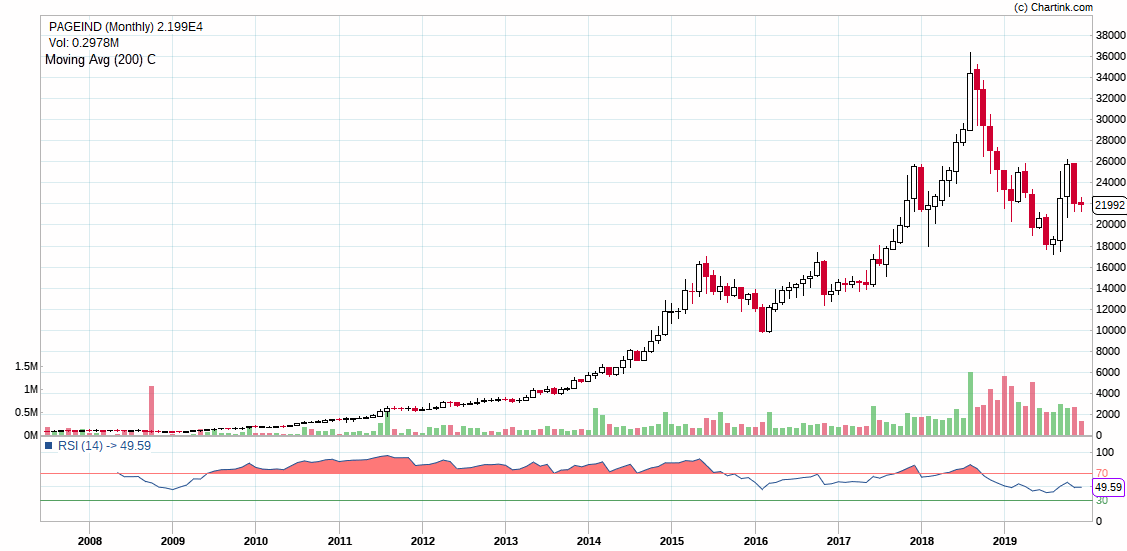Understand PE rerating and derating and how to identify a stock or a sector for PE rerating well in advance to generate better returns from the market.
Every investor in the market wants to make the most of his or her investments. The best returns one can get is when you invest in a company, and over time, the PE multiples for the company get rerated.
What is PE Rerating or Derating?
PE or price to earnings ratio is a ratio of the current share price of the company to its earnings per share.
As an example, if a company is earning ₹5 per share or an EPS of ₹5 and currently trading at ₹150, it is trading at ₹150/₹5 = PE multiple of 30.
The PE rerating is when the company starts trading at more than 30PE. So for example, if the company begins trading at 40PE, it is known as PE rerating.
Similarly, if the company starts trading at lower PE multiple, it is called derating in PE multiple. So in our example, if the company trades at 20PE.
PE Rerating Example
The story of Page Industries is well known. Let me take its example first. The reason we are seeking an example of Page Industries is that the stock hasn’t given any bonus or stock splits.
In 2008, as per Screener.in, the EPS of the company was ₹20.
In 2019, the company reported an EPS of ₹350.
The EPS of the company grew by 17.5 times.
The share price has risen 50 times from ₹450 to almost ₹22k
A classic case or PE-Rerating.
Everyone talks about Page Industries, but to motivate my readers, let me also share the example of PE-rerating from my open portfolio as well.
Pidilite Industries I purchased on 08-Sep-2016 at ₹700. At that time, the EPS of the company was around ₹15, and I bought the stock at close to 45PE.
In 2019, the stocks EPS has increased to ₹21. An increase in by 40%, whereas the stock has almost doubled to ₹1400 and is trading at 65PE.
PE Derating Example
Similar to PE-Rerating, Derating also happens in stock when the future outlook becomes bleak, or there is business uncertainty.
This time let me directly take the example from my open portfolio. The stock is Amara Raja Batteries.
In 2014, the EPS of the company was ₹21. The share price was hovering around ₹750 at a PE multiple of close to 35.
As of today, the EPS of the company is ₹35, and the share price is ₹700 and trading at 20PE.
A classic case of PE derating because of the uncertainty in the future outlook and a possible disruption that can hit the automotive battery segment because of a move towards EV.
How to Identify a PE Rerating?
If a company can show consistent growth, the PE rerating happens. Similarly, if there is uncertainty in the business, the PE derating happens.
The best way to identify a company where one can expect PE-rerating is:
- Identify a company with low price to earnings ratio – You can’t expect a PE rerating to happen to stocks trading at 50 and 60PE multiples.
- Expect an exponential growth – The companies that can show better than expected growth for an elongated period can see PE rerating.
With the above criteria, it becomes easy to spot stocks or sectors for PE rerating.
As an example, Graphite India Ltd had an EPS of ₹4in 2016 and an EPS of ₹174 in 2019. An increase in EPS by 40x, but the stock was higher by only 10x. In the correction, it is now trading at almost the same levels as in 2017. If the company can re-invent itself to a consistent growth trajectory, the PE-rerating may occur. Otherwise, we may see the stock getting derated.
Similarly, paper stocks are trading at a PE multiple of ~5. If the companies can reinvent themselves and take advantage of the plastics ban, the PE-rerating may occur in the whole sector.
Similarly, Pharma sector companies that can deal with USFDA issues efficiently will see a PE rerating. However, those who can’t have the stock price derated.
One must remember the PE rerating happens over a more extended period. The company will show a growth momentum, but for PE to rerate, one has to have a consistent growth after the initial momentum.
Should One Focus on PE Rerating or Growth?
Why not both.
I am more of a growth investor than a value investor. However, it doesn’t mean I don’t invest in value stocks that can become large companies in the coming decade.
Ideally, invest in growth companies where there is a scope for PE-rerating. To boost the performance of the portfolio, add some value stocks where there is a high chance of PE being rerated.





Leave a Reply